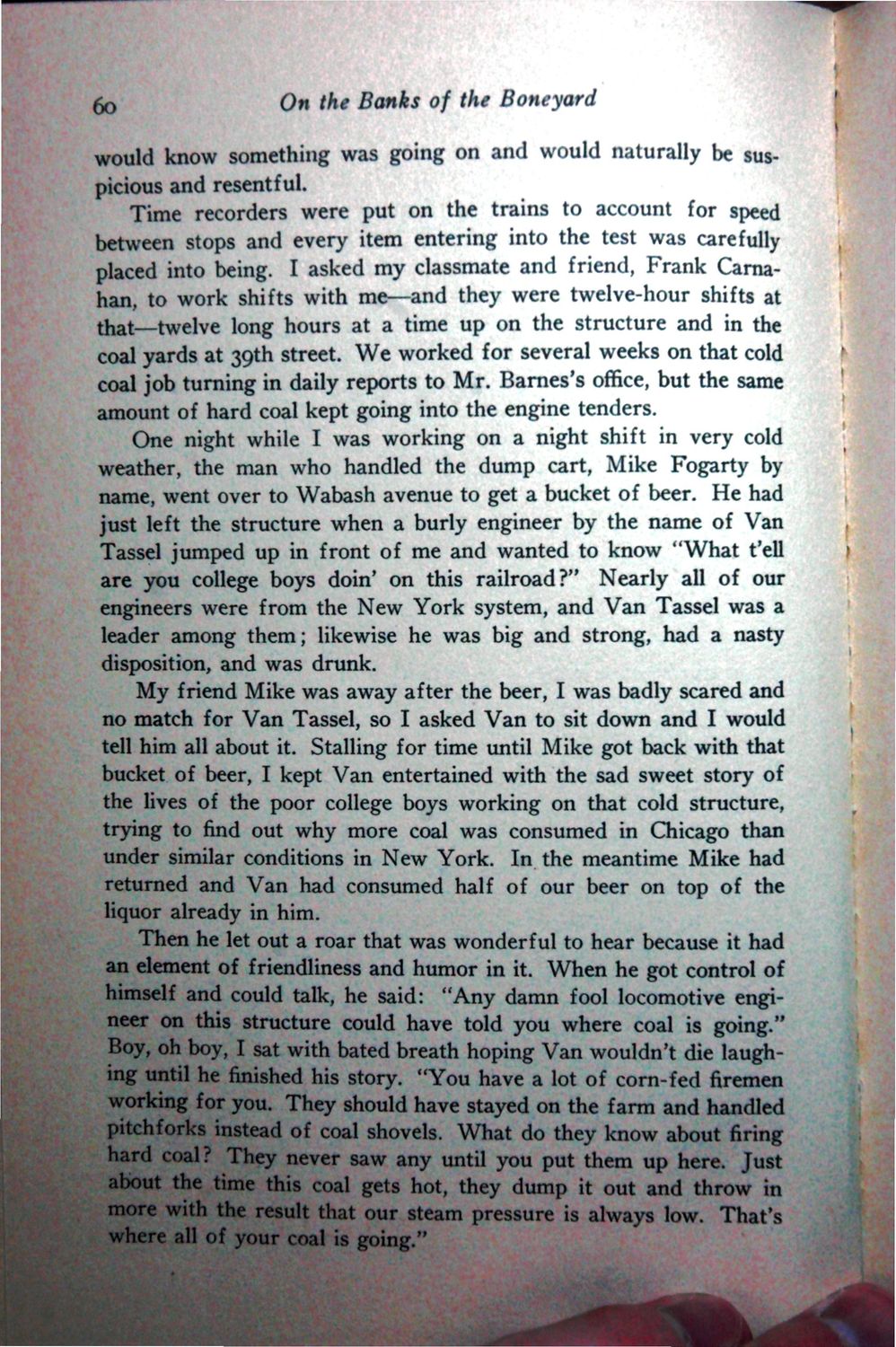| |
| |
Caption: Book - Banks of the Boneyard (Charles Kiler)
This is a reduced-resolution page image for fast online browsing.

EXTRACTED TEXT FROM PAGE:
60 On the Banks of the Boneyard would know something was going on and would naturally be suspicious and resentful. Time recorders were put on the trains to account for speed between stops and every item entering into the test was carefully placed into being. I asked my classmate and friend, Frank Carnahan, to work shifts with me—and they were twelve-hour shifts at that—twelve long hours at a time up on the structure and in the coal yards at 39th street. We worked for several weeks on that cold coal job turning in daily reports to Mr. Barnes's office, but the same amount of hard coal kept going into the engine tenders. One night while I was working on a night shift in very cold weather, the man who handled the dump cart, Mike Fogarty by name, went over to Wabash avenue to get a bucket of beer. He had just left the structure when a burly engineer by the name of Van Tassel jumped up in front of me and wanted to know "What fell are you college boys doin' on this railroad?" Nearly all of our engineers were from the New York system, and Van Tassel was a leader among them; likewise he was big and strong, had a nasty disposition, and was drunk. My friend Mike was away after the beer, I was badly scared and no match for Van Tassel, so I asked Van to sit down and I would tell him all about it. Stalling for time until Mike got back with that bucket of beer, I kept Van entertained with the sad sweet story of the lives of the poor college boys working on that cold structure, trying to find out why more coal was consumed in Chicago than under similar conditions in New York. In the meantime Mike had returned and Van had consumed half of our beer on top of the liquor already in him. Then he let out a roar that was wonderful to hear because it had an element of friendliness and humor in it. When he got control of himself and could talk, he said: "Any damn fool locomotive engineer on this structure could have told you where coal is going." Boy, oh boy, I sat with bated breath hoping Van wouldn't die laughing until he finished his story. "You have a lot of corn-fed firemen working for you. They should have stayed on the farm and handled pitchforks instead of coal shovels. What do they know about firing hard coal? They never saw any until you put them up here. Just about the time this coal gets hot, they dump it out and throw in more with the result that our steam pressure is always low. That's where all of your coal is going/'
| |